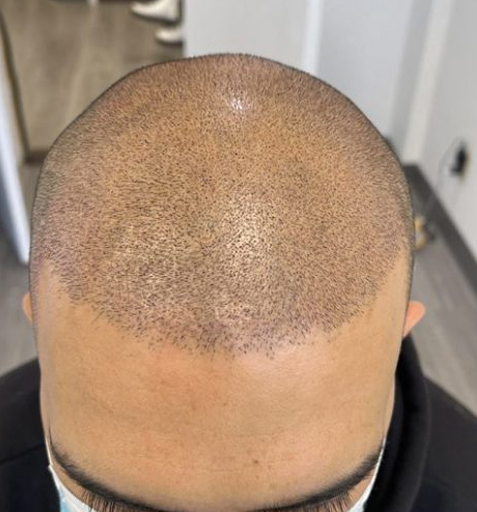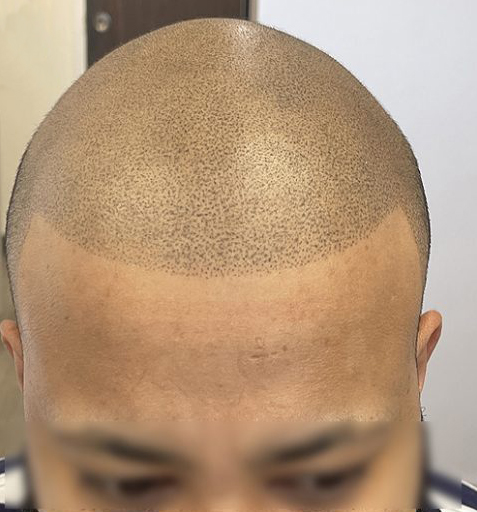
Table of Contents
Hair loss is a problem faced by many people. It may bear on self-esteem and confidence. But lucky enough, the invention of some new and original methods such as scalp micropigmentation (SMP) and tricopigmentation (TCP) have not only been invented but also have become widely used. Both ideas are good treatments for hair loss. However, you might ask, “Which one is better for me?” The focus of this blog post is a comprehensive analysis of scalp micropigmentation and tricopigmentation.
Table of Contents
Scalp Micropigmentation is a procedure of piercing and coloring the skin with tiny needles, usually called a medical aesthetic treatment. This pattern imitates the appearance of the hair follicles.
In a majority of cases, people transform their shapes and do not tell the difference. Many are the individuals who, aside from SMP, use adding hair to have hair that covers a better surface.
SMP can be a very useful technique for those who want to get their hair restoration treatment done in a duration of 3 to 4 years. The effects of the process can last for two to several years. It is a woman who could need such a procedure, because she is prone to having female baldness.
The task, of course, is that it will not hurt that much and it is not time-consuming. SMP is famous for its durability. The efficacy of the procedure can endure for numerous years.
You may want to look at the pros of SMP:
SMP is closest to TCP but they both have certain characteristics which make this distinction between each. Through a specially prepared pigment and method, TCP will get a softer effect that way. This pattern is not always a permanent one. It will usually last 9 to 12 months unless it is erased.
It is also important to consider the positive sides of TCP:
You might ask yourself, what is the difference between these two methods? Let’s take a look at some of the most important points.
More long-term effects come from the SMP process. Every 2-3 years you would have to return for a touch-up. Unlike the latter, TCP is the kind of treatment that requires more frequent touch-ups. That is why chances of several eye surgeries in one year such as a touch-up every 1-2 years might be needed.
SMP creates a compact visual impact for the skin. It is appropriate for people who have a lot of hair fall. TCP, on the other hand, is the opposite and it connects the different stories of users to an altogether more natural, softer look. It is perfect for those with lighter hair and for those who would prefer a subtle change.
You may experience a small degree of discomfort with both of these technologies. SMP might be a bit more painful because the pigment has to travel deeper into your skin. In general, TCP involves a shorter recovery period and the redness is less pronounced.
Such variations can be noticed, for example, in the costs of SMP and TCP. Upfront, SMP undoubtedly costs more. The cost versus its lifespan will certainly be higher, especially in cases of those who are using a more expensive product. On the other hand, the cost of TCP is usually lower at the beginning but it can add up to more when the patient needs to touch up the hair more frequently.
To select SMP (scalp micropigmentation) or TCP (tricopigmentation) is all about your special requirements. Think about what you like to do and where you are going to use it in your life.
These questions will allow the user to find the right solution. It is a good idea to also get the advice of a professional. A qualified healthcare professional will be able to give you some personalized suggestions according to your hair’s condition and the goal you want to reach.
Both of the two most popular hair loss treatments, scalp micropigmentation and tricopigmentation are highly successful. Each method is different in its own way. SMP is the method that allows for a longer duration of the results and looks thicker. TCP has a more adaptable and softer appearance.
It is important to consider decisively the advantages and disadvantages. Get the one that suits your aim best. Of course, both these solutions can make you feel much better about yourself and spruce up your features.
How long is the SMP process?
The record of the treatment is 2-4 hours but it can be more depending on the treated area.
Is it possible to change SMP for a TCP later on?
Absolutely, it is a valid option to change the method but you are first advised to consult with a professional to evaluate your particular situation.
Is SMP suitable for all skin types?
The first good thing that should be made known is that scalp micropigmentation is suitable for all skin types. Understanding the best skin for scalp micropigmentation ensures optimal results and long-lasting effects, as the treatment is versatile and adaptable to various skin conditions.
What would my maintenance schedule be for SMP?
The most common thing is to apply touch-ups every 4-5 years, but this depends on some individual characteristics.
What can I anticipate after the TCP method?
You might have a slight reddish color and sensitivity in that part of your body. The majority of people feel better very soon and can go back to their normal routines the following day.






© 2024 HAIRTATTOO.CA | Scalp Micropigmentation & Trichology Centre
